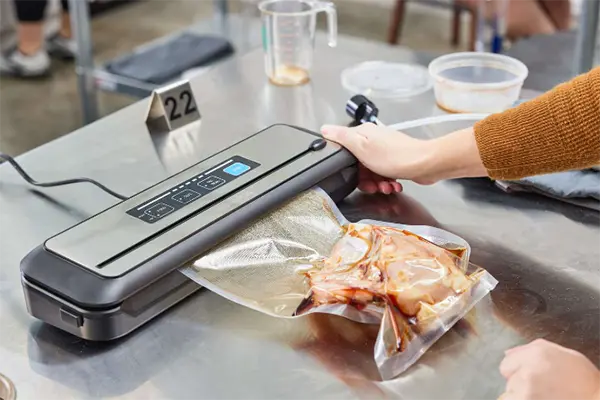Vacuum packaging is a popular method for preserving and extending the shelf life of various products. It involves removing air from the packaging to create a vacuum, which helps prevent spoilage, maintain product freshness, and reduce the risk of contamination. But have you ever wondered what materials are used in vacuum packaging? In this article, we will delve into the world of vacuum packaging equipment and explore the essential components and materials that make it all possible.
Understanding Vacuum Packaging
The Purpose of Vacuum Packaging
Vacuum packaging is a technique used to package a wide range of products, including food, pharmaceuticals, electronics, and more. The main purpose of vacuum packaging is to remove air from the packaging, creating a low-oxygen environment that helps preserve the product’s quality, taste, and texture. By eliminating oxygen, vacuum packaging inhibits the growth of spoilage-causing bacteria, slows down oxidation, and extends the shelf life of the packaged items.
Components of Vacuum Packaging Equipment
Vacuum packaging equipment consists of several key components that work together to create the vacuum seal. These components include:
- Vacuum Chamber: The vacuum chamber is the central part of the vacuum packaging equipment. It is a sealed chamber where the product and packaging are placed for the vacuum sealing process. The chamber is made of durable and food-safe materials, such as stainless steel or high-quality plastics, to ensure hygiene and longevity.
- Vacuum Pump: The vacuum pump is responsible for removing air from the vacuum chamber. It creates a vacuum by extracting the air and gases through a series of mechanical or electrical processes. Vacuum pumps can vary in size and technology, including rotary vane pumps, oil-free pumps, or advanced vacuum systems, depending on the specific application and packaging requirements.
- Sealing Bar: The sealing bar is a heated element that seals the packaging material once the air has been removed. The sealing bar is typically made of heat-resistant materials, such as Teflon-coated metal or silicone, to provide a reliable and airtight seal. The temperature and duration of the sealing process are carefully controlled to ensure proper sealing without damaging the packaging material or the product.
Packaging Materials Used in Vacuum Packaging
Vacuum Bags or Pouches
Vacuum bags or pouches are the primary packaging materials used in vacuum packaging. These bags are specially designed to withstand the vacuum sealing process and protect the product from air and external contaminants. The materials used in vacuum bags include:
- Polyethylene (PE): Polyethylene is a commonly used material for vacuum bags due to its excellent barrier properties against moisture and oxygen. It is a flexible and durable plastic that can be transparent or opaque, depending on the desired product visibility. PE bags are suitable for a wide range of products, including food, non-food items, and medical supplies.
- Nylon (PA): Nylon is another material used in vacuum bags, particularly for products that require enhanced protection against oxygen and puncture resistance. Nylon bags have excellent gas barrier properties, making them ideal for preserving the freshness of food products, such as meat, cheese, and coffee. They are also commonly used in the pharmaceutical industry to maintain the efficacy of sensitive medications.
- Polyethylene Terephthalate (PET): PET is a transparent and strong material used in vacuum bags when product visibility is essential. It provides good oxygen and moisture barrier properties, making it suitable for packaging products like fresh produce, snacks, and bakery items. PET bags are also commonly used for vacuum packaging non-food items, such as electronic components or industrial parts.
Conclusion
Vacuum packaging relies on various materials to create an airtight and protective environment for products. The key components of vacuum packaging equipment, including the vacuum chamber, vacuum pump, and sealing bar, work in harmony to remove air and seal the packaging. Vacuum bags or pouches, made from materials like polyethylene, nylon, or PET, provide the necessary barrier properties to preserve the product’s freshness and quality. Understanding the materials used in vacuum packaging helps ensure proper preservation and extends the shelf life of a wide range of products.
Post time: 03-12-2024


